Articles

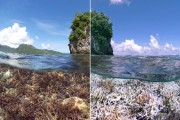
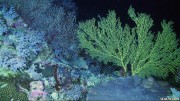



As part of the NERP TE project 2.3 temperature loggers were deployed at 15 sites across the Torres Strait to measure ocean temperature. The loggers regularly (every 10 minutes) measure the sea water temperature and record it in their memory. Every year or so the loggers are swapped with new loggers and the recorded data is extracted and recorded in the AIMS Real Time Data Systems database as part of the Australia wide Sea Temperature Observing System.
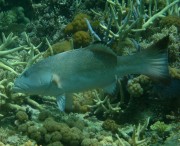
No-take marine reserves (NTMRs) are widely advocated for conserving exploited fish stocks and biodiversity. Research investigating the effects of the 2004 rezoning of the Great Barrier Reef Marine Park (Emslie et al, 2015) showed that expanding NTMR networks had clear benefits for fishery target, but not non-target, species. A cyclone caused widespread degradation, but target species biomass was retained within NTMRs, with greater recovery potential.
The crown-of-thorns seastar, Acanthaster planci, is a predator of corals and along with cyclones is the major cause of coral mortality on the Great Barrier Reef (GBR) 1 . The GBR is currently experiencing the fourth wave of crown-of-thorns infestations since the 1960’s.

The last decade in north Queensland has seen a striking contrast of summers of below median rainfall (2002-2006) and ‘big wets’ (2007-2012). The run of relatively dry summers, followed by the years of high summer rainfall created perfect conditions for researchers to study the effects of river runoff on water clarity in the Great Barrier Reef (GBR) lagoon.
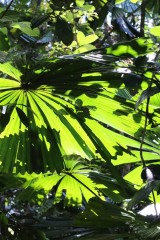
It will be no surprise to anyone who has visited the Wet Tropics World Heritage Area (WTWHA) that both visitors and the local Queenslanders love the place. The region is famous for its wildlife, biodiversity and natural beauty. Exactly how much we love it, and what in particular we love about it, is being studied by researchers at JCU. They found safety and being able to access quality infrastructures to be the most important factors, no matter who you are, or where you come from.
Corals are the back bones of coral reef ecosystems. They produce calcium carbonate skeletons that build coral reef framework. Reef fishes and many other inhabitants depend upon corals for shelter and food. Coral populations are dynamic, cycling through phases of disturbance and recovery. Many types of disturbance kill corals including cyclones, Crown-of-Thorns Starfish (COTS) outbreaks, bleaching and disease.
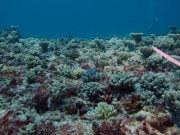
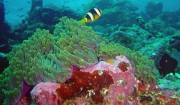
Preserving biodiversity is an essential component of most conservation and environmental management strategies but what actually is biodiversity and why is it important? Put simply, biodiversity is the incredible variety of life that surrounds us and the most fundamentally important reason for its preservation is that critical reductions in biodiversity can lead to the degradation of ecosystems and reduced quality of life for all inhabitants, including humans.

Pesticides from agricultural sources have been detected throughout the year in the Great Barrier Reef World Heritage Area (RRMMP). Australia has strict standards and monitoring to limit the amount of pesticides allowed in food products. However, the fate and impact on the environment of toxic chemicals applied to crops is less well known.
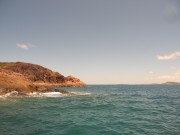
It’s a classic conservation planning problem. There are hundreds of islands within the Great Barrier Reef World Heritage Area with ecological values of national and international significance. Serious threats to those values are posed by invasive plants and animals, and there are limited people and money to manage the threats. How should the conservation dollar be spent?
The crown-of-thorns starfish (COTS) (Acanthaster planci) feeds almost exclusively on hard corals and is endemic to coral reef ecosystems throughout the Indo-Pacific (Birkeland 1990). These large starfish are covered in sharp toxic spines and once grown have few natural predators. Over their lifetime they can produce 100’s of millions of eggs that have the highest fertilisation rate recorded for any spawning marine species. The pelagic larvae produced from spawning can float in the water column for weeks before settlement and can easily travel large distances between reefs.

The Winds of Zenadth Cultural Festival takes place every two years on Thursday Island. The festival is a community event that brings people together and showcases the strength and diversity of the Torres Strait people’s culture and customs.
The eAtlas information stall at the festival in September 2014, provided an opportunity for the community to try out the mapping and visualisation tools and to get familiar with the look and feel of the site. The most important message for the community was that the Torres Strait eAtlas is an internet site that is free for everyone to use.
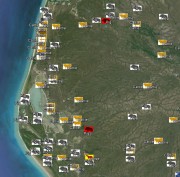
Feral pigs (Sus scrofa) are widespread in northern Australia. Pigs are on our farm lands, in the bush, on the beach and in the world heritage areas of the Wet Tropics rainforest. CSIRO scientists who are monitoring and modelling pig populations in Queensland have one message: Protect what you love.
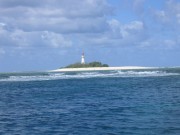
The coral reef islands on the southern GBR are a great place to start a family. But after the nesting season is over many of the animals that breed on the islands, swim or fly far away. Tracking devices on turtles and seabirds that nest in the region around Heron Island on the southern Great Barrier Reef (GBR) are recording the journeys of the animals as they travel across the ocean.



